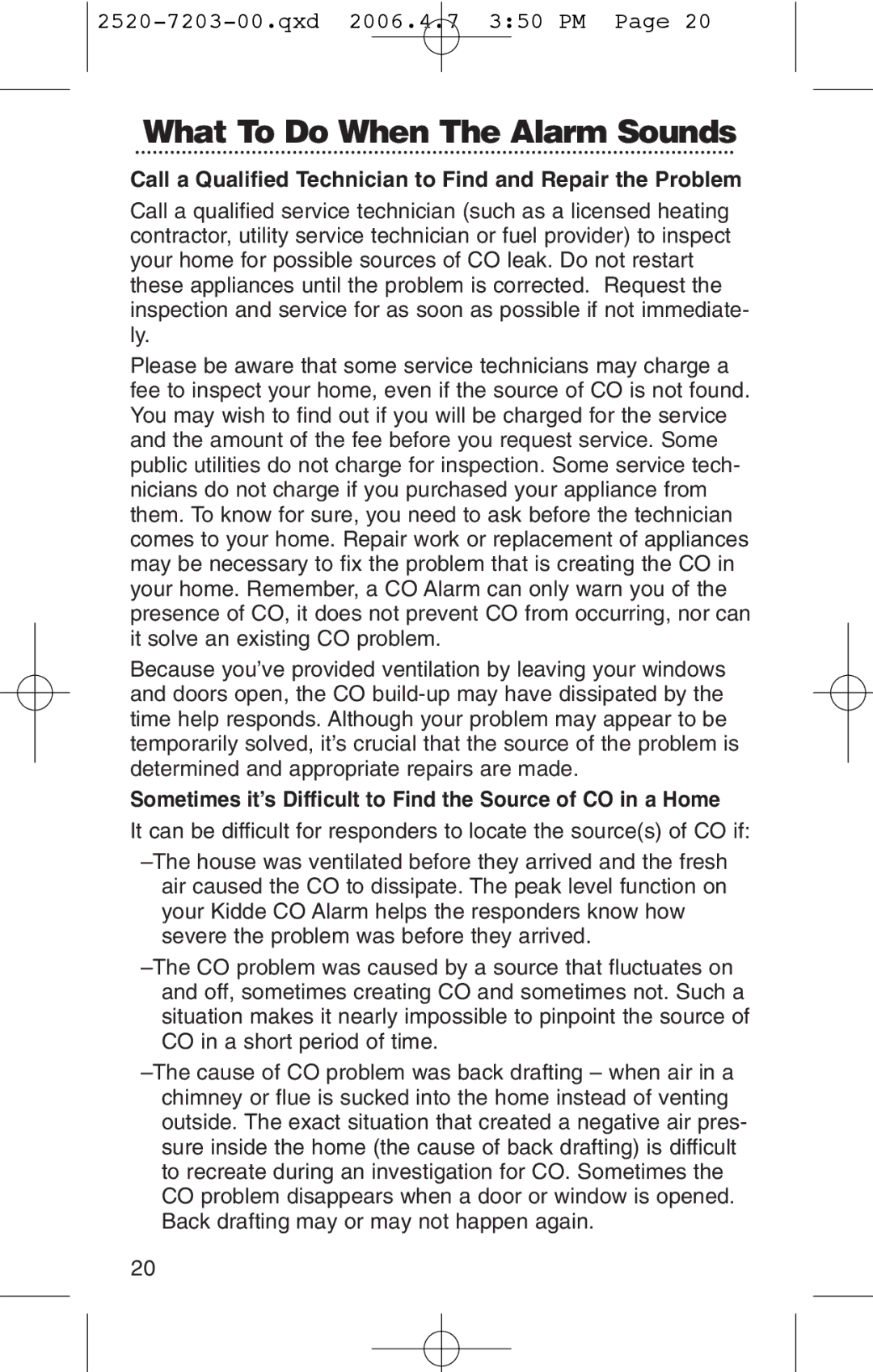KN-COPD-3-UK specifications
The Kidde KN-COPD-3-UK is an advanced carbon monoxide detector that provides crucial protection against the dangers of CO gas, a silent and deadly threat often produced by faulty appliances or insufficient ventilation. Designed for residential use, the device integrates cutting-edge technologies and user-focused features to ensure the safety and peace of mind of families across the UK.One of the standout features of the KN-COPD-3-UK is its electrochemical sensor, which is highly reliable and sensitive to even the smallest concentrations of carbon monoxide. This technology enables the detector to activate swiftly, providing early warnings and potentially saving lives. With a detection range of 0-300 parts per million, the device is capable of identifying dangerous CO levels that may emerge from everyday appliances such as gas boilers, fireplaces, and stoves.
The device boasts a compact and stylish design, allowing it to blend seamlessly into any home environment. With its easy-to-read digital display, users can monitor CO levels in real-time, giving them immediate awareness of potential hazards. The display also features a backlit option, making it convenient to read in low-light conditions, ensuring that it remains user-friendly around the clock.
Another key characteristic of the Kidde KN-COPD-3-UK is its audible alarm, which is set to emit a series of loud beeps when it detects elevated levels of carbon monoxide. This alarm is complemented by visual alerts that flash when CO is present, ensuring that occupants are promptly informed of the situation. The device is also equipped with a test/reset button, allowing users to check its functionality easily.
For ease of installation, the Kidde KN-COPD-3-UK is designed to be wall-mounted or placed on a shelf, providing flexibility depending on user preferences. Importantly, the device features a battery backup, ensuring continuous operation even in the event of a power outage, enhancing overall reliability.
With a lifespan of up to 10 years, this carbon monoxide detector is an investment in safety that requires minimal maintenance. Its energy-efficient design adds to its appeal, ensuring that it operates effectively without excessive power consumption.
Overall, the Kidde KN-COPD-3-UK offers a robust combination of advanced sensor technology, user-friendly features, and reliable performance, making it an essential addition to any household looking to safeguard against the hazards of carbon monoxide.

